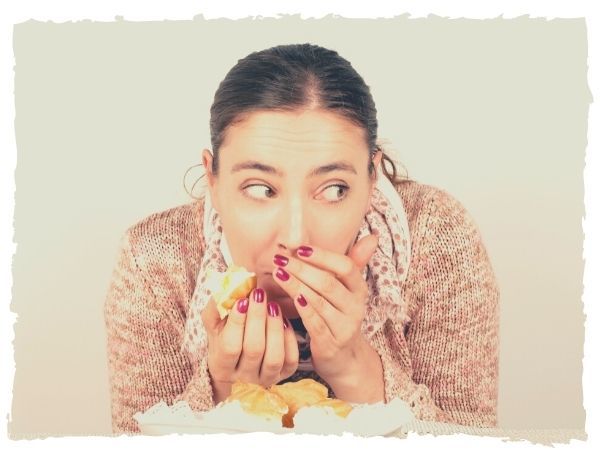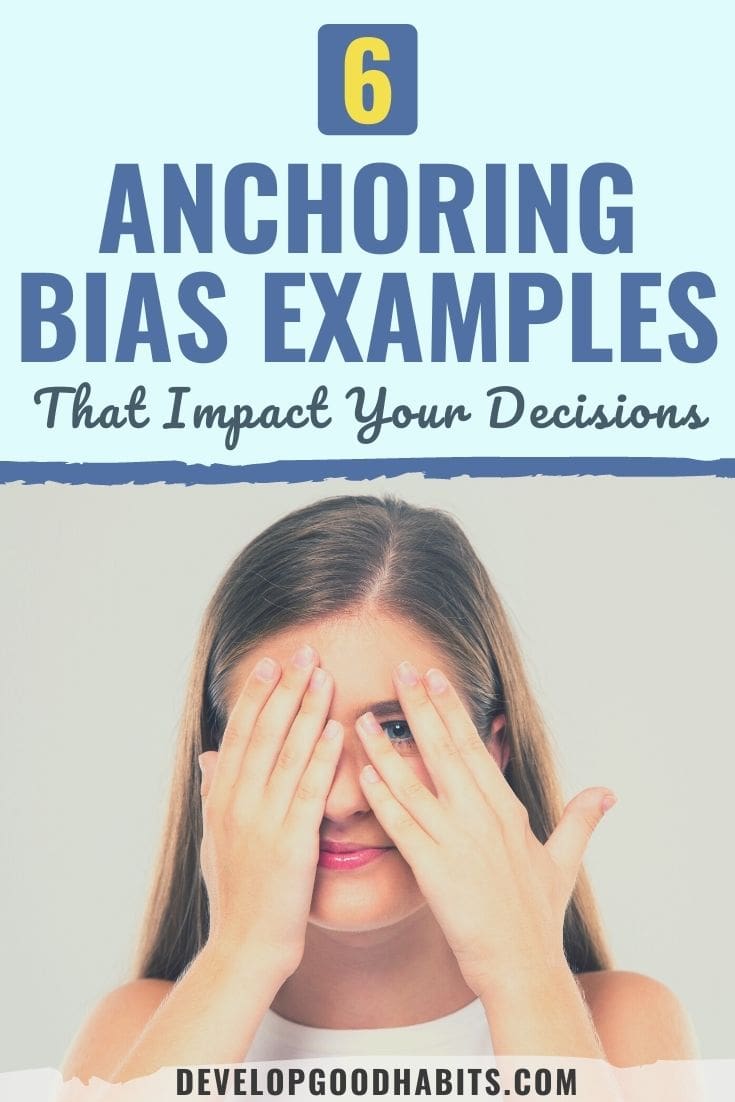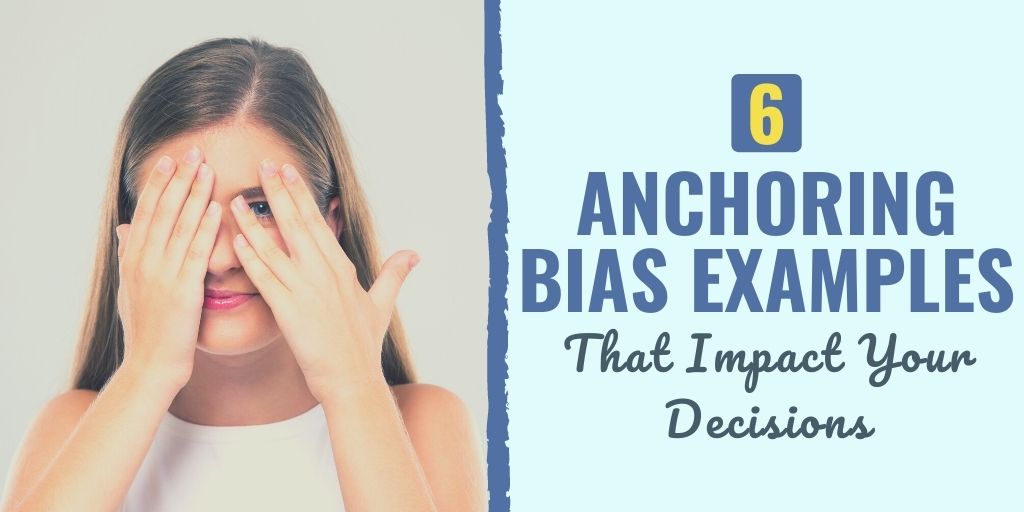If I were to ask you what the cost of living will be in Canada in March of next year, the first thing you may think to ask back is what the cost of living in Canada is today. Then, based on that number, you would probably make an assumption about how (or if) that may change in the next few months.
By starting with a set point, you’re able to make a more reasonable or educated guess based on that value anchor.
This method of thinking is frequently used in behavioral finance, but also surfaces in other everyday decisions.
In this article, we are going to take a deeper look at what anchoring bias is and review some studies that have been conducted on this phenomenon. Then we will go over 6 examples of this logical fallacy.
Let’s start by defining anchoring bias.
What Is Anchoring Bias?
In 1974, Tversky and Kahneman (two of the most influential people in behavioral economics) conducted a classic study that looked at people’s judgment-making process when they’re uncertain about the issue at hand. The researchers found that people make insufficient adjustments from an initially presented value (an anchor) when coming to conclusions. That said, anchoring bias refers to the influence that your pre-existing knowledge on a matter has on your future decisions.
Once an anchor is set–or you have some information on a topic–your judgments that follow are made by using that information as a starting point and adjusting your decision based on your interpretation of other factors. People use the initial reference point as a filter for any new information that’s obtained and assume a range of plausible values based on this focal point.
This can be problematic because it can not only alter people’s perception, it can also prevent people from changing their minds in any significant way, even if it’s necessary to do so.
It is very hard for people to avoid falling into this trap when making decisions. In fact, there are many studies that show just how powerful this bias is and its impact on all decision making processes. For example, in one study, students were split into two groups, with one group being asked if Gandhi died before or after age nine, and the other, if he died before or after he was 140. Most people recognize Gandhi’s name and clearly know he didn’t die before the age of nine, and the longest-surviving human died at 122, so what type of impact did these obviously ridiculous questions have on the students’ answers?
After being offered an anchor of nine years old, the first group’s average answer for when Gandhi died was 50, and with the higher anchor of 140, the second group guessed an average of 67 years old.
While neither answer was especially close to the age at which Gandhi actually died (87), the initial anchor had a clear impact on people’s decided answer.
Let’s take a look at some everyday anchoring bias examples that may impact your decisions.
6 Anchoring Bias Examples That Impact Your Decisions
1. Gas Prices
When it comes to making purchases, research suggests that people form their opinions of a product’s value and price by considering similar goods that have been purchased in the past. So, when you’re evaluating the cost of gas, if you see it at $50 per gallon, you’re likely to pause before taking out your credit card.
This is considered to be rational behavior, as it shows how people learn from previous experiences to determine a subjective concept of how much everyday items should cost.
Around 2006/2007, the price of gas trended right around $1.85 per gallon. However, slowly but surely, prices crept up. But people had gotten so used to paying under $2 per gallon, that these rates had been anchored in people’s minds. So as gas prices started to near the $3 per gallon mark, consumers felt they were paying too much to drive around town.
However, prices eventually settled right over that $3 threshold, at which time consumers were able to reset their anchors to this higher standard. Then, when prices decreased again toward $2.50 per gallon, consumers felt like they were getting a deal whenever they had to fill up.
So at one point, people thought paying $2.50 per gallon was ridiculous, but just years later, they thought this price was a steal. This shows that the actual cost of the gas played less of a factor in consumers’ psychological well-being than the context of the price compared to their mental anchor.
2. Sales
Have you ever been on a “once in a lifetime” sale at a furniture store, just to find that the 80% off prices still seem pretty high? Have you ever then looked at the original price and wondered if the product actually cost that much at some point?
People in sales often use this cognitive heuristic to influence others’ conclusions, which is often used in circumstances where people are trying to make something look like a great deal to consumers.
Another trick that marketers use to increase sales is pricing items at dollar amounts ending in nine. Have you ever wondered why things are so frequently $9.99 instead of $10? It’s because consumers anchor $9.99 in their minds as being $9 rather than $10, so the product may seem like a deal when compared with the first time they saw it for sale at $10.49. Using this kind of “charm pricing” has been shown to increase sales an average of 24%.
3. How Much Are You Willing to Pay?
Let’s say you’re researching cars online in anticipation of making a purchase. You see that the average price of the car you want is $29,000, and with that information, you set out to go car shopping.
The first place you go has the car you want and the dealer is offering it for $27,500. This sounds like a great offer, so you quickly move forward with the purchase, thinking you’re saving yourself $1,500. However, you later pass by another dealership that is offering the same car for $25,250–which would have saved you $3,750 from what you were originally prepared to pay.
You may be upset with yourself for buying the car at the first dealership you visited, but you jumped on that first offer because it seemed like a great deal at the time. However, you also failed to look at more information, like the very real chance that other local dealers might be selling the car for even less, and you made your decision on the initial information you had, which acted as an anchor in your mind.
4. Portion Sizes
People use the idiom, “my eyes are bigger than my stomach” when they order too much food at a restaurant or serve themselves more food than they can eat. And when this happens, even if one recognizes the vast amount of food in front of them, they typically end up eating more than they usually would in one sitting.
On the other hand, if you’re served a relatively small portion of food, you may be able to recognize you’re satisfied and don’t need to eat anything else once you finish. The difference in food intake in these two scenarios is likely related to the anchoring bias.

In one study, participants were split into two groups and asked to envision being served either a small or big meal. They were then asked to describe their average portion size for their meals. The responses were representative of the anchoring bias, as those who were tasked with imagining a large plate of food estimated their average meal size to be much larger than those who were initially exposed to a small portion of food through visualization. In fact, even when the participants were asked to forget about their initial assigned meal size, the anchoring bias still proved to be impactful.
Being served larger portions has been shown to increase the size of bites people take, reduce estimates regarding calorie consumption, and add value to the meal by lowering the perceived cost of the food per unit, which all attracts consumers to eat more.
To get the anchoring bias to work for you when it comes to determining the portion size of your meal, look at healthy portion sizes to give yourself an anchor that will influence your food intake. Using a visible or tangible anchor will help you make better judgments when it comes to determining how much you should eat in one sitting.
5. Wait Times
Speaking of eating and restaurants, think of a time that you put your name on a waiting list at a restaurant to get a table after being told it would take about 30 minutes. And then think about how frustrated you started to get when 30 minutes came and went and your name hadn’t been called.
Now think about how you may feel if 35 minutes was approaching and the host had told you it would be a 45 minute wait. In that case, rather than anxiously waiting in frustration, watching the clock, and maybe even looking for a good opportunity to complain to the host, you would be starting to get really excited that your wait was almost up. However, in both scenarios, you would have waited the same amount of time, your anchor just would have been different.
6. Criminal Sentencing
In court, judges are able to sentence those being charged with a crime however they feel is appropriate; but before doing so, lawyers usually ask for a specific prison sentence for people who are being convicted. And, research shows that these initial requests serve as anchors and often have an impact on the judge’s final decision.
Several studies have demonstrated that when criminal judges are presented with a recommendation for a prison sentence, it has a significant effect on the length of the sentence that the judge ultimately orders. When given a higher anchor, judges are more likely to order criminals to spend more time in prison than when a lower anchor is suggested.
The results of studies like these show how an anchor can influence a judge’s perception of a case, therefore skewing their final judgment–which further shows that even those who are experts in their fields have a hard time side-stepping anchoring bias.
Final Thoughts on Anchoring Bias
As one of the most robust cognitive biases that humans experience, anchoring bias can skew our perspective, leading us to adhere to a particular value, despite its potential irrationality.
By looking at examples of anchoring bias that you may come across in everyday life, you can notice a fundamental aspect of humans’ thought processes. Sometimes, we think in such basic terms that we don’t even analyze our decisions after coming to a conclusion.
This tendency to use initial reference points to make decisions can lead us astray. But by being aware of this cognitive shortcut that we tend to take, you will know in the future to either do additional research on a matter before making a decision or simply remind yourself of the anchoring bias so you’re not negatively impacted by it. By adding a step into your processes of making decisions that’s meant to explore potential weaknesses of your decisions and consider some alternatives, you may be able to reduce the strong influence of an anchor.
Read More About Logical Fallacy Examples
- 5 Appeal to Nature Fallacy Examples in Media and Life
- 6 Outcome Bias Examples That Can Negatively Impact Your Decisions
- 7 Self-Serving Bias Examples You See Throughout Life
- 7 Omission Bias Examples That Negatively Impact Your Life
- 6 Authority Bias Examples That Might Impact Your Decisions
- 5 Burden of Proof Fallacy Examples
- 5 Appeal to Tradition Fallacy Examples in Life
- 5 Appeal to Authority Logical Fallacy Examples
- 7 False Cause Fallacy Examples
- 7 Appeal to Ignorance Fallacy Examples
- 7 Appeal to Common Sense Logical Fallacy Examples
- 5 Post Hoc Fallacy Examples (and How to Respond to This Argument)
- Gambler’s Fallacy: 5 Examples and How to Avoid It
- 5 Appeal to Anger Fallacy Examples Throughout Life
- 7 Halo Effect Bias Examples in Your Daily Life
- 7 Poisoning the Well Examples Throughout Your Life
- 7 Survivorship Bias Examples You See in the Real World
- 7 Dunning Kruger Effect Examples in Your Life
- 7 Either Or (“False Dilemma”) Fallacy Examples in Real Life
- 5 Cui Bono Fallacy Examples to Find Out “Who Will Benefit”
- 7 Virtue Signaling Examples in Everyday Life
- 7 Cherry Picking Fallacy Examples for When People Ignore Evidence
- 9 Circular Reasoning Examples (or “Begging the Question”) in Everyday Life
- 9 Appeal to Emotion Logical Fallacy Examples
- 9 Appeal to Pity Fallacy (“Ad Misericordiam”) Examples in Everyday Life
- 9 Loaded Question Fallacy Examples in Life and Media
- 9 Confirmation Bias Fallacy Examples In Everyday Life
- 9 Bandwagon Fallacy Examples to Prevent Poor Decisions
- 5 Red Herring Fallacy Examples to Fight Irrelevant Information
- 9 Middle Ground Fallacy Examples to Spot During an Argument
- 5 False Equivalence Examples to Know Before Your Next Argument
- 7 Hasty Generalization Fallacy Examples & How to Respond to Them
- 6 Straw Man Fallacy Examples & How You Can Respond
- 6 False Dichotomy Examples & How to Counter Them
- 7 Slippery Slope Fallacy Examples (And How to Counter Them)
- What is the Planning Fallacy?
- How to Overcome the “Sunk Cost Fallacy” Mindset
Finally, if you want a simple process to counter the logical fallacies and cognitive biases you encounter in life, then follow this 7-step process to develop the critical thinking skills habit.

Connie Mathers is a professional editor and freelance writer. She holds a Bachelor's Degree in Marketing and a Master’s Degree in Social Work. When she is not writing, Connie is either spending time with her daughter and two dogs, running, or working at her full-time job as a social worker in Richmond, VA.


